You can find the earlier parts of this replay here:
- Plantagenet – War of the Roses replay by Christophe Correia, Part 1
- Plantagenet – War of the Roses replay by Christophe Correia, Part 2
After the Yorkists’ to keep the throne, the death of York and to rise of power of Margaret and her son Edward, peace in England had been achieved for the next 12 years.
However, as happened previously with Warwick and the Yorkists after York’s rise to the throne of England in 1461, a gap started to grow again between Warwick and the Lancastrians due to their inability to satisfy his hunger for power.
He thought that, as the main protagonists of the Lancastrian rise in the second war, he should be able to keep a lot of power. But the young King Edward, son of Henry VI, influenced by its counsellor Jasper Tudor and his mother Margaret, instead sent Warwick and the remaining Yorkists into Exile in Burgundy.
Although the Kingdom of England was peaceful until 1483, Warwick had gathered enough forces between himself and the leftover Yorkist partisans to try, a third and last time, to overthrow the English King, this time to seize the crown for himself.
Heirs in the line of succession:
For the Lancastrians:
Henry VI is not present, killed by Warwick at the Battle of Ipswich, 1461
Margaret and King Edward, at London

Henry Beauford, also absent, killed by York at the Battle of Ipswich, 1461
Edmund Beauford, absent overshadowed by Jasper Tudor

For the Yorkists:
Richard Plantagenet, absent died in Exile of old age

Edward, son of York, absent, overshadowed by Warwick to claim the throne of England
Rutland, killed by Somerset at the Battle of Bristol, 1460
Richard, son of York, absent, overshadowed by Warwick to claim the throne of England

Richard, Earl of Warwick and pretender to the throne of England

Protagonists of the Third War (1483-1485):
Lancastrian side from left to Right:
Margaret (with King Edward), Oxford, Jasper Tudor

Yorkist side from left to right:
Warwick, Salisbury, Norfolk

England, 1484
Warwick and his Yorkists allies start the game in Calais where they gathered up enough troops to try an invasion of England. The last war of the scenario is much quicker than the previous two (in total 33 Command Cards played in this scenario compared to 81 Command Cards played in the previous two) and the victory conditions makes it very likely that a decisive battle ends things.
The dead of the numerous Lancastrians heirs means that their situation is slightly more fragile: the Yorkists starts with a slight edge in Influence Points (the white influence point marker shown above).
The strategy for each side is quite clear: the Lancastrians hold the center of the map and the London area, Warwick, militarily weaker but more mobile and more influential, will gather support from the strongholds all around England.
The Yorkist influence points advantage quickly grows to a large advantage (+32), and the Lancastrians begin more and more desperately to challenge the Yorkist armies.
Jasper Tudor, more mobile than the other Lancastrians lords (Command 3 instead of 2) fights the Yorkists to determine who will get the decisive advantage and win the War of the Roses.
Battle of York: Jasper Tudor faces off the three Yorkist lords. He’s way more powerful than individual enemy lords, but the three Yorkists together make a very powerful enemy.
Slowed down by a Ravine, Warwick would not be able to participate in the first round of Battle.
After the first round of Battle, Norfolk would be completely routed and Salisbury troops hold a sliver of health, only his Retinue and some Men-at-Arms continuing to stand.
The Archery phase of the second round of battle sees most troops routed. Only the Retinues and Vassals of both sides hold.
At the end of the Melee phase, the last forces of both Salisbury and Jasper Tudor are destroyed. Only Warwick’s retinue and some hundred men survive the battle.
Norfolk dies in combat, along with Jasper Tudor but the Yorkists achieve their main goal: the inability of the Lancastrians to beat them in the field ensures the collapse of the Lancastrian cause.

Jasper Tudor – killed by Warwick in the Battle of York, July 1485

Norfolk – killed by Jasper Tudor in the Battle of York, July 1485
The last turn of the game sees Warwick overseeing the Lancastrians’ collapse and their inability to achieve control of England.
The full-length scenario, after three wars and multiples battles, finally has the “Kingmaker” Warwick taking the throne of England himself, overthrowing the Lancastrian dynasty to found his own.
Notes:
Here are some statistics about the Influence points dynamic of the different Wars.
Influence points, in the first War, York at the top, and Lancaster at the bottom.
In the Second War:
In the Third War:
The three scenarios may seem to play out quite the same but they are actually quite different: While the first war is focused on getting Lords on the field and both sides have a big array of lords on who to call, things are more difficult in the second War.
With the Warwick rule (Margaret and her huge army comes in early if that triggers) and the inability for the Lancastrians to group the two together, this scenario concerns how best maneuver around the map and force the enemy into a difficult situation. The second scenario also incentivizes the “losing” side to hold out the longest possible, as that improves the chances of York or Henry VI, dying of old age. (The time spent battling took a big toll on them)
The Third scenario is meant to be three against three. In the regular, historical scenario, Richard III, Norfolk and Northumberland face off against Henry Tudor, Jasper Tudor and Oxford.
The goal of this scenario is to get the player to stage a last face-off to the death. In this particular session, I did not play very well: I built huge armies, instead of spending my time and resources to strengthen my hold on England: The situation quickly became desperate for my Lancastrians, as the population became angry at my inability to destroy the enemy while exhausting England.
In this War of the Roses play-through, Warwick became King but that’s far from the only possible outcome. In total, 10 different Lords can end up becoming King of England, and Warwick is only one of them.
Plantagenet puts a lot more emphasis on killing your enemies as a goal in itself, compared to Nevsky or Almoravid, where killing enemies is more a consequence of putting your opponents in such a situation that they are forced to put their Lords in danger.
Plantagenet’s situation can always change drastically as we saw it in the first War, during which the Yorkists came back; in the second War, which the Lancastrians ended up winning by 1 Influence point after 15 Turns; and in the Third War which the Lancastrians would have won by beating all enemy heirs had Warwick’s Retinue routed (The outcome ended up hanging on a single die roll!)
I hope you have enjoyed reading this play-through of the full length-scenario of Plantagenet. The game is available to be purchased from GMT website here.
– Christophe

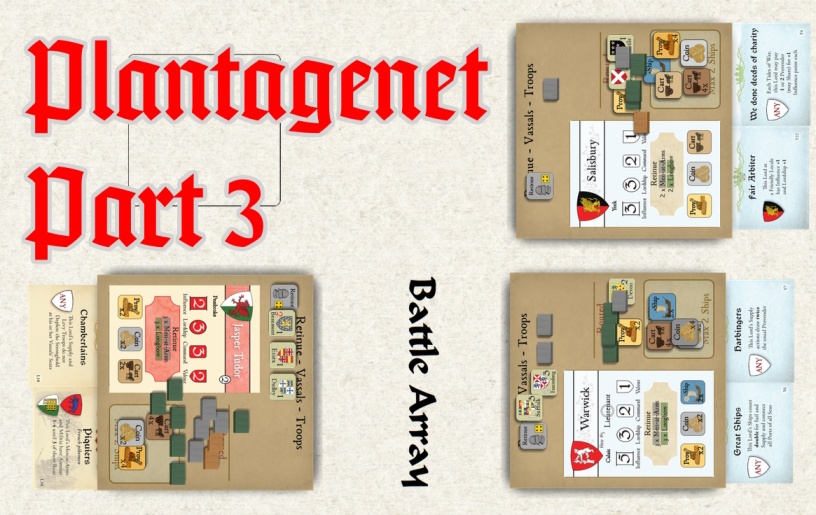
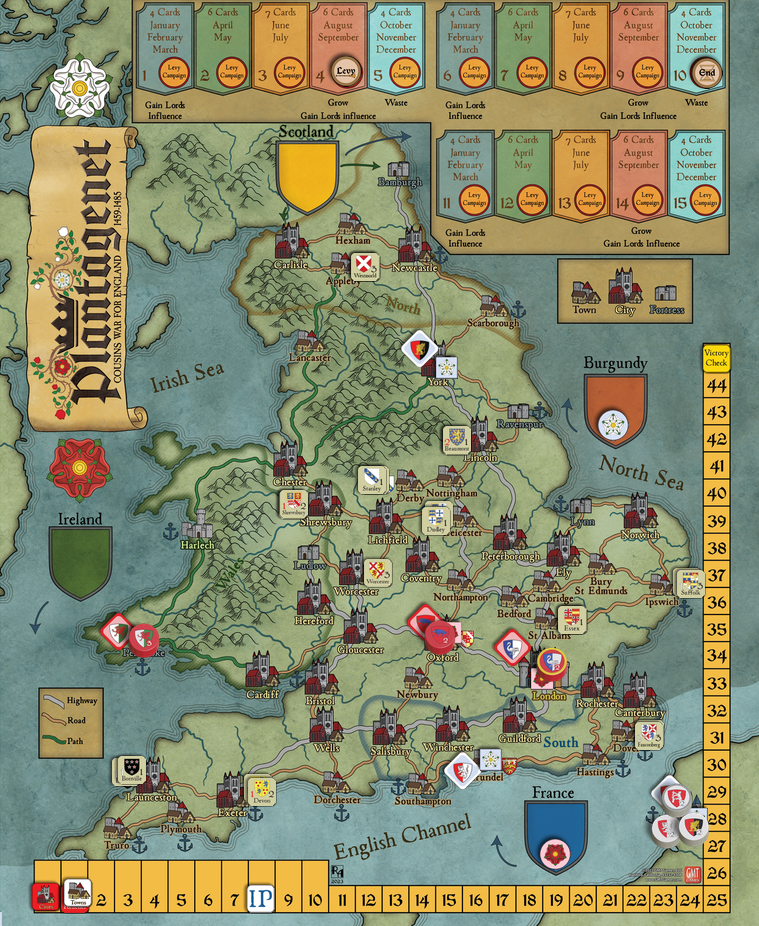







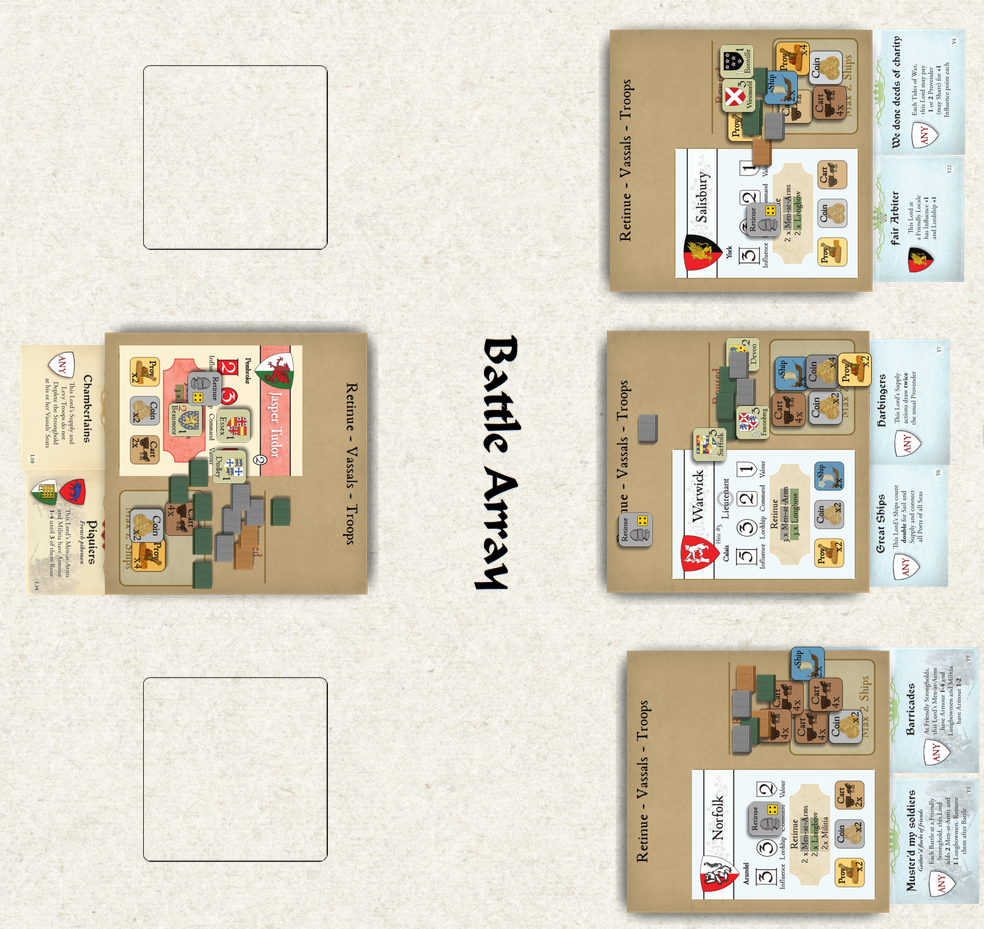
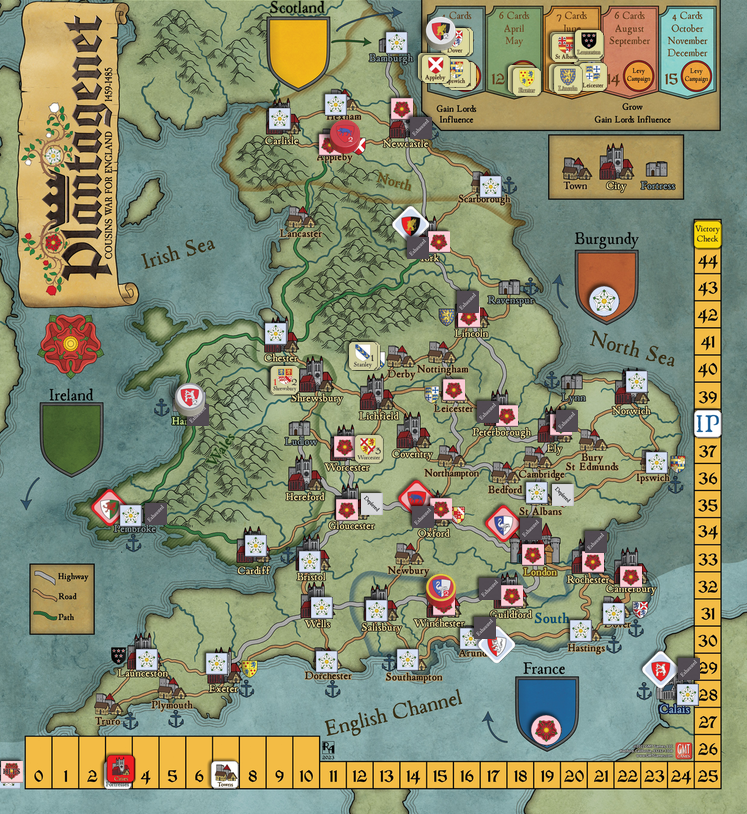
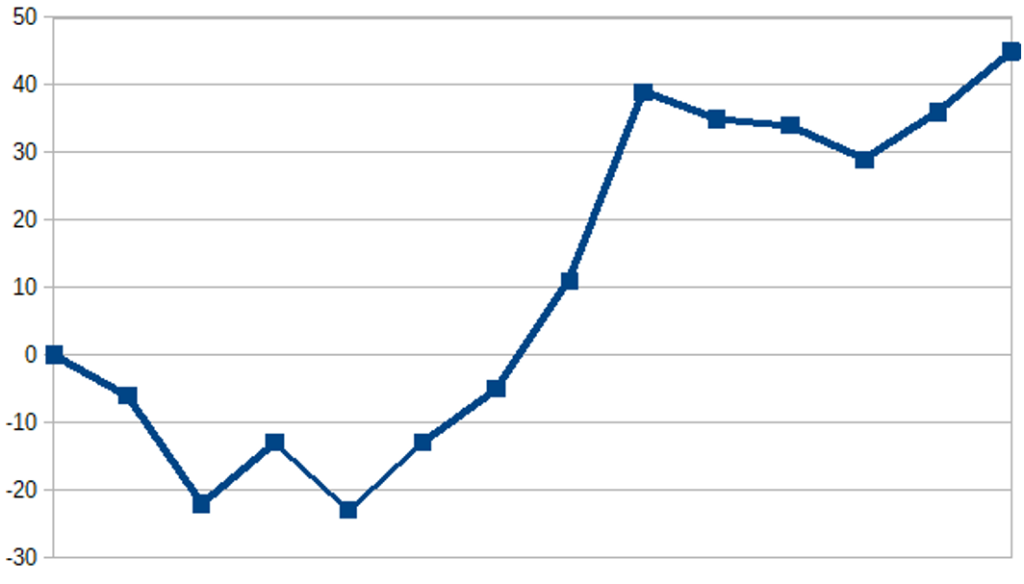


Very exciting! The focus on killing the opposing nobles is very appropriate for the Wars of the Roses.
LikeLiked by 1 person
Oh yes, this is different flavor than in previous installments; and who would have thoughts that Warwick would become king…
LikeLiked by 1 person
The kingmaker makes himself king! …well, a lot of the other candidates were dead already.
LikeLiked by 1 person
Indeed! Have not thought about it from that perspective!
LikeLiked by 1 person